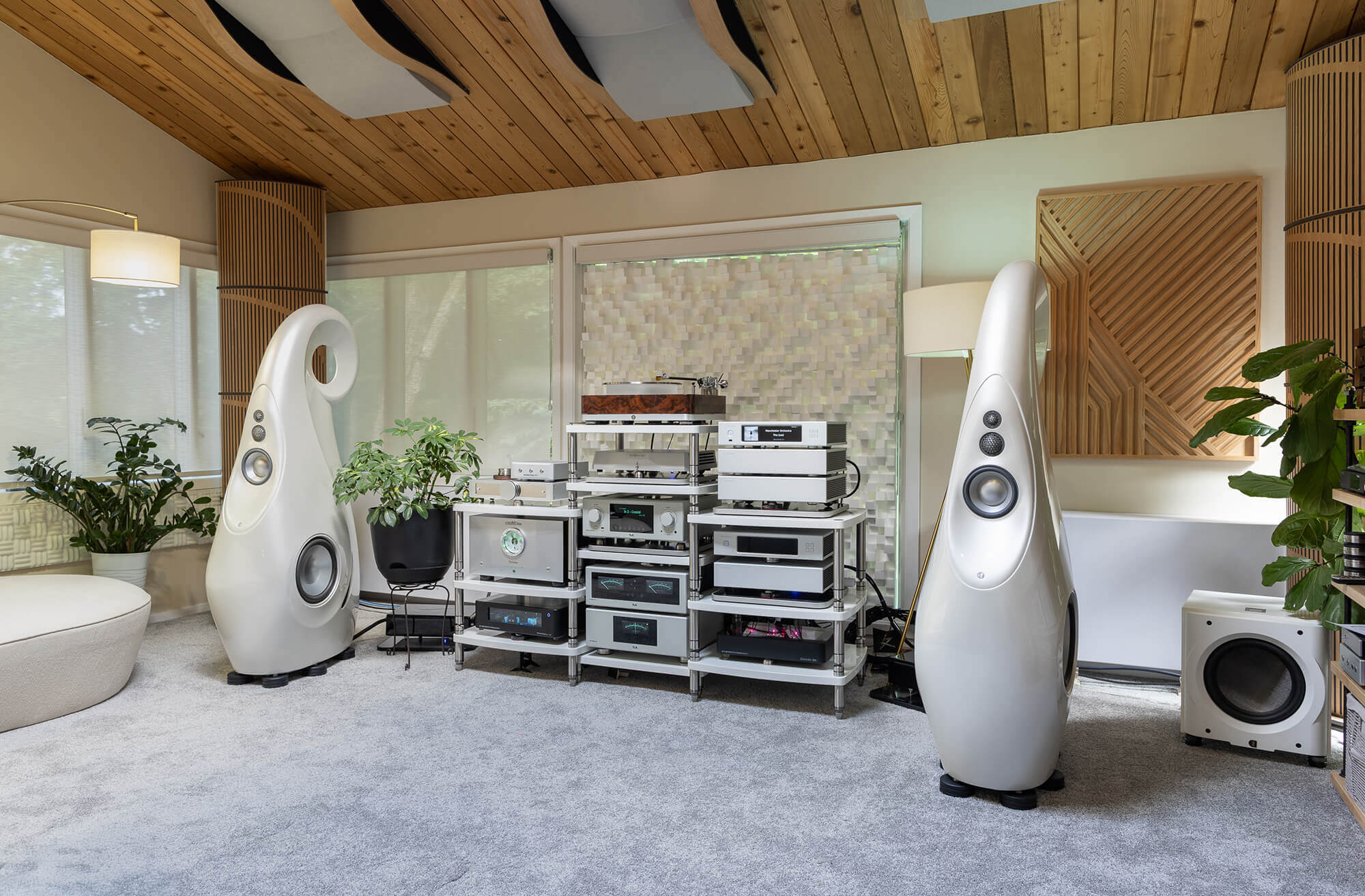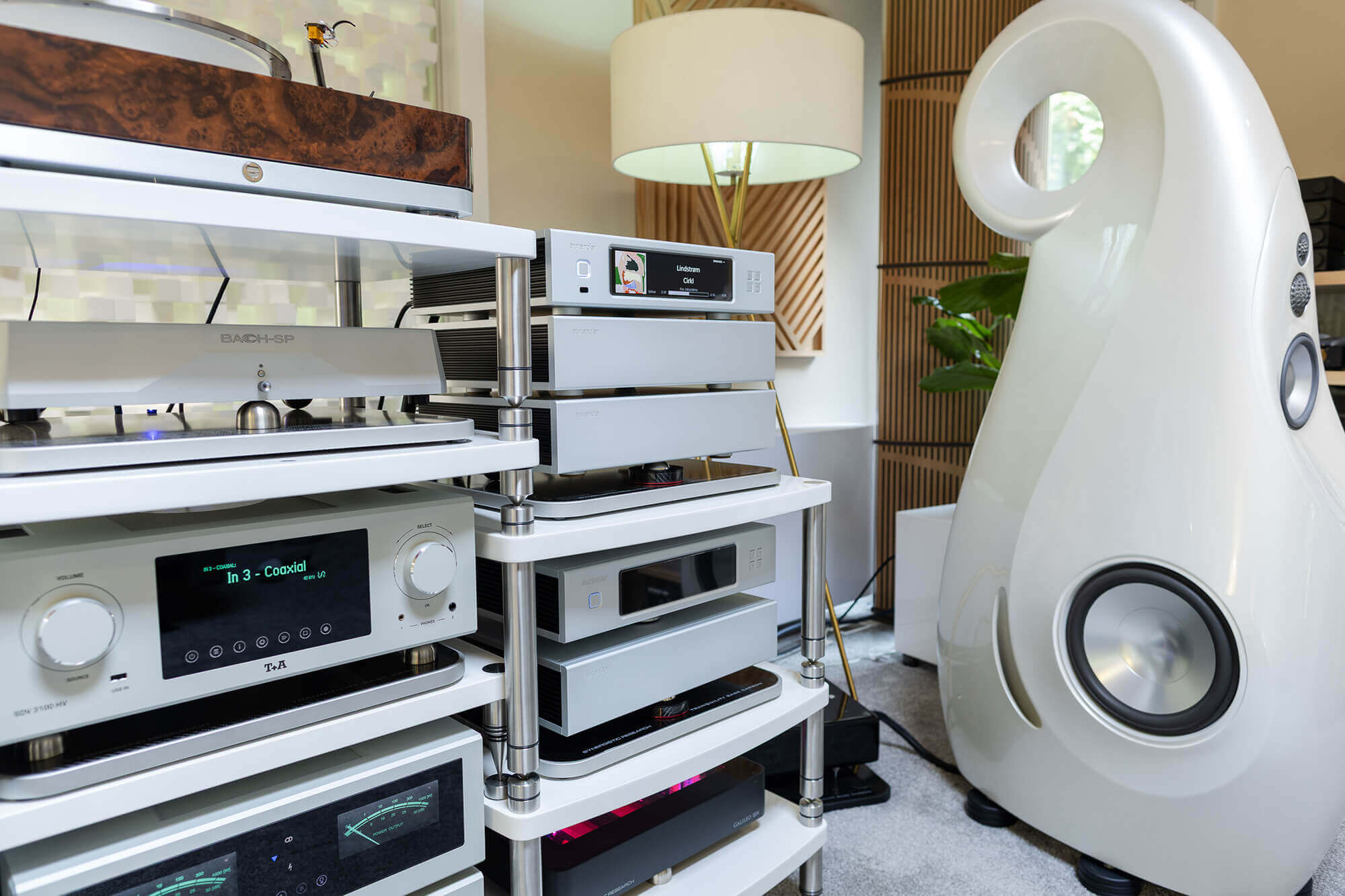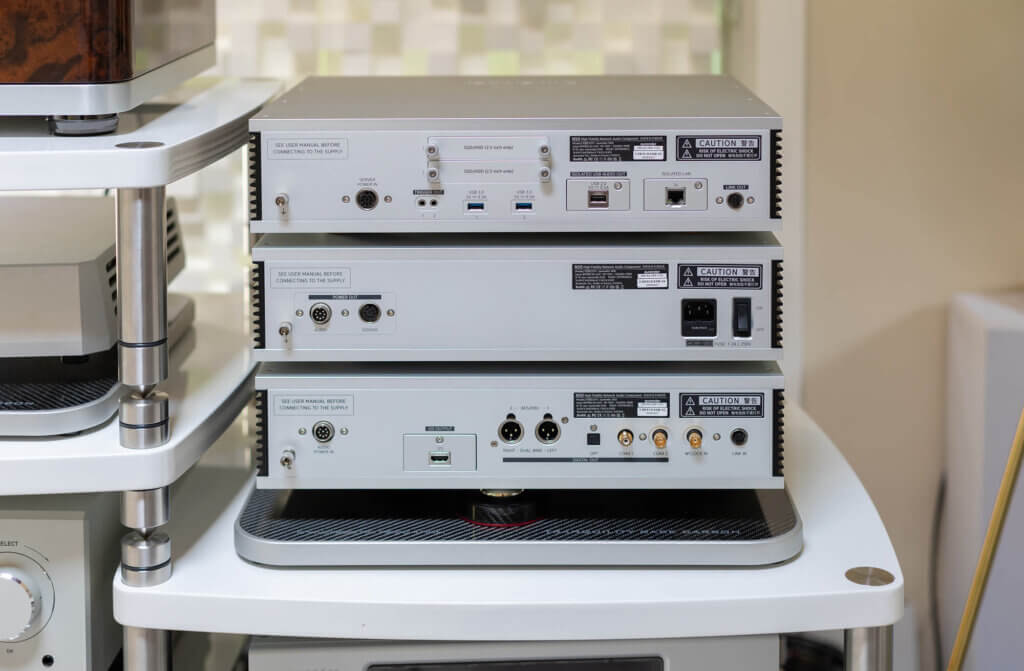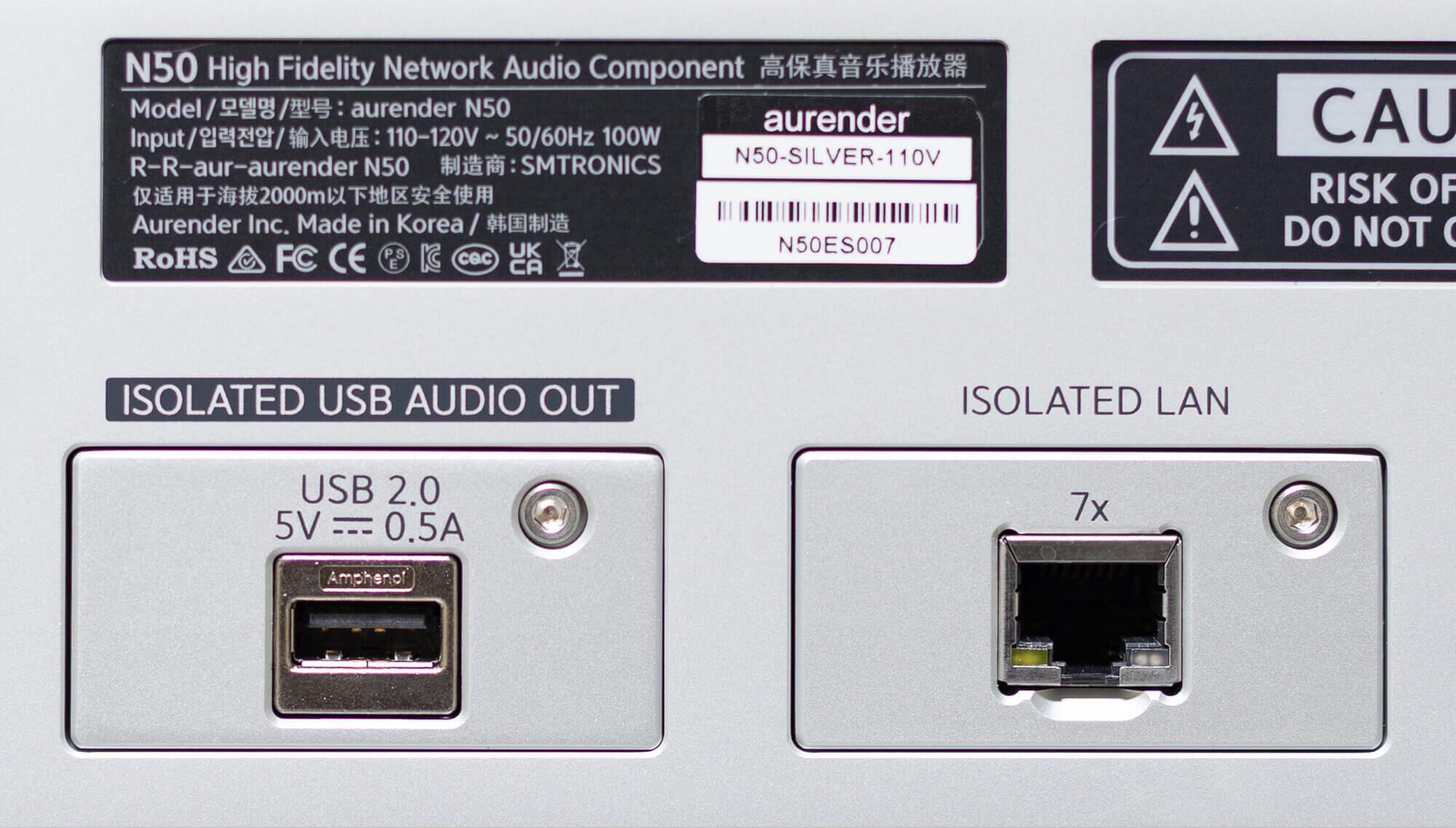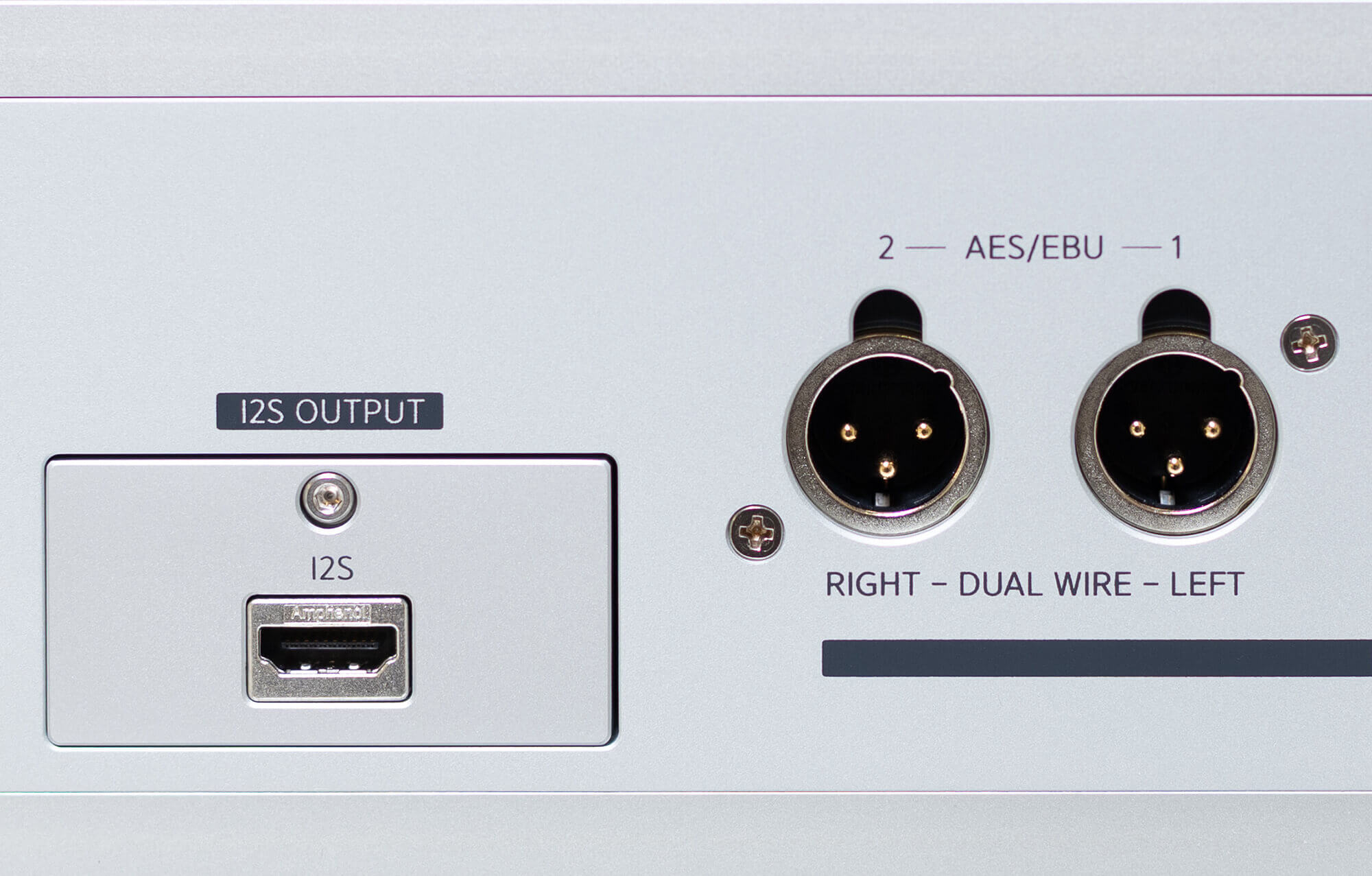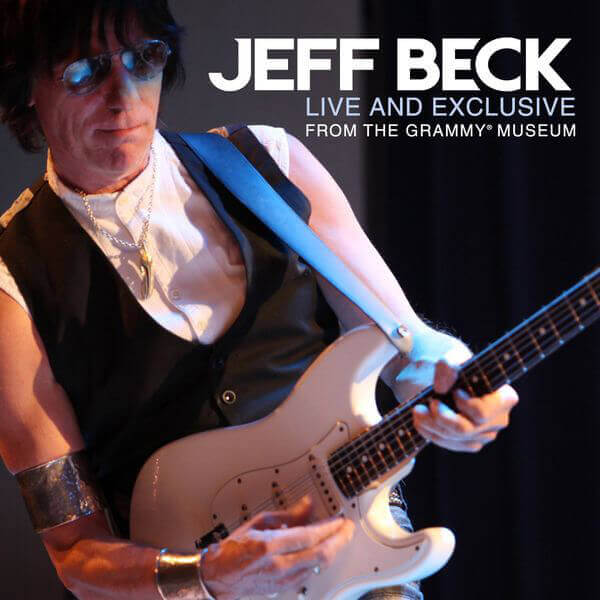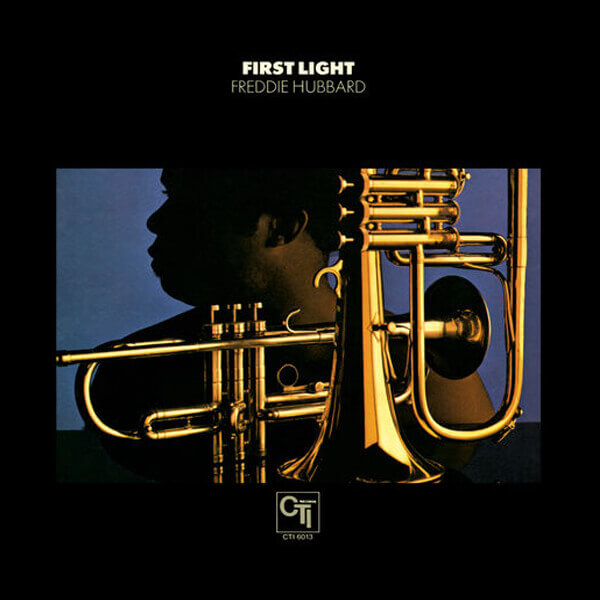Comparing the Aurender N50 and Aurender N30SA (Part 2 of 2)
Finally… Tuning In
Aurender maintains its characteristically neutral presentation—neither conservative nor overly smooth compared to competitors like Innuos or Auralic. However, listening to the N30SA after the N50 revealed the former’s slight restraint across many parameters compared to its successor.
The opening of Fink’s “Sort of Revolution (Sidestep Dub)” on
Sort of Revolution (Single, 2009) immediately reveals subtle improvements in percussion presence and dynamics, from the speed and punch of the bass drum to he speed sustain, decay and air of the cymbals and toms. Enhanced separation is also noticeable when the bass guitar enters. The bass guitar is produced wonderfully on this track, likely applying some sort of compression effects to attain the incredible growl from playing simple notes. Through the N50, this growl becomes fully realized—not only audible but viscerally felt, with the instrument’s textural liveliness filling the room. The N30SA delivers this information but more tentatively.
While both machines excel at noise floor and staging at their price points, the N50 distinguishes itself not by creating a larger stage, but by improving airflow within it. There’s simply less congestion in the performance as bass, percussion, and electronic embellishments intersect without obfuscation.
The same is true when playing Jeff Beck’s breathtaking live performance of “Brush with the Blues”, from
Live and Exclusive from the Grammy Museum (2010). This is one of the most transparent live recordings I’ve ever heard, and Beck’s breathtaking live performance through the N30SA delivers impactful placement of performers with excellent individual contributions and depth. When switching to the N50, the increase in presence slightly enlarges the performers’ individual images. While this initially drove me to believe of a more forward presentation, careful analysis revealed that depth is actually improved. Overall, the track’s presentation was more visceral, more alive, and the forwardness of the emotional response allows for the song to “reach” and “touch” its listeners while Beck’s incisive guitar still originates well beyond the speaker plane, farther than it did with the N30SA.
The N50’s superiority becomes most evident during complex passages, particularly the 3:00-4:30 timespan when intensity peaks during Beck’s virtuosic breakout with Narada Michael Walden’s high-energy percussion. The N50 easily reveals greater dynamic range; every element with heft, texture, and the appropriate amount of separation and improved detail retrieval for superior musical coherence. Crucially, in comparison to the N30SA, the N50 delivered these improvements with an even more realistic tone, making the experience more emotionally engaging. In this fully analog recording, no digital artifacts emerged.
Continuing in the vein of heightened dynamic range and substance, I need to share my experience when listening to one of my favorite jazz tracks, “Moment to Moment” from Freddie Hubbard’s
First Light (1975). Opening as an intricate, contemplative noir ballad with flowing melody and relaxed tempo, it shifts mid-track into energetic, swinging improvisation with significantly increased tempo, creating magical dynamic contrast. Due to its exceptional staging, performer interplay, and musical appeal, this has been a demonstration reference for my clients for a few years now. It was also in heavy rotation both on digital and remastered vinyl in the Bliss Hifi room at AXPONA 2025. Having intimate familiarity with its N30SA presentation—which I considered exemplary—the N50 comparison proved revelatory.
This track exemplifies the N50’s enhanced dynamic range and substance. Opening as an intricate, contemplative noir ballad with flowing melody and relaxed tempo, it shifts mid-track into energetic, swinging improvisation with significantly increased tempo, creating magical dynamic contrast. Due to its exceptional staging, performer interplay, and musical appeal, this has been my client demonstration reference for two years, featured heavily both digitally and on remastered vinyl in the Bliss Hifi room at AXPONA 2025. Having intimate familiarity with its N30SA presentation, which I considered exemplary, the N50 comparison proved revelatory.
From the opening, Ron Carter’s bass through the N50 introduces itself with more muscular tone, enhanced growl and texture. The backing symphony’s violins and oboes, plus Jack DeJohnette’s cymbal decay, portrayed a richer, more fleshed-out presentation than through the N30SA. The tone becomes more vivid—appropriately so when Freddie Hubbard’s horns soar. This made the images of each performer larger and more present, but without mutual interference. The soundstage dimensions remain similar between the two units; neither portrayed wider or deeper staging, but the N50’s layering in every dimension becomes more apparent, largely due to improved coherence and separation while maintaining richer, more vivid performance.
The N50 truly excels during the 2:30 shift, particularly when the uptempo peaks just before 3:00. DeJohnette’s drumming showcases equal proportions of technical mastery and creativity, while Carter demonstrates playful prowess through quick plucks and sustained notes. With the highlight of Hubbard’s horn soaring above backing instrumentation, including Herbie Hancock’s reverberant Rhodes piano, images could easily smear or lose tonal balance. The N50 handles this effortlessly. Where the N30SA already delivered reference-level performance, the N50 achieved this with superior transient response and improved pacing while retaining the tonal saturation described above.
Aurender MC10: The Missing Piece?
One limitation of this review is the absence of an Aurender master clock evaluation with either unit. I’ve previously used the Aurender MC10 on demo with my N30SA for several months. With the clock engaged, the N30SA’s coherence snaps into lockstep, similar to upgrading from consumer to professional camera lenses. Image outlines become crisper yet more confident, effortless in delivery. Texture becomes more apparent, speed more immediate. Overall delivery gains breath, transforming the N30SA into a truly world-class performer. I can only imagine the N50 paired with an MC10, though perhaps I’ll be fortunate enough to it experience this later this year or early next.
The Right Fit
While my descriptions above may suggest significant improvements in the N50 over the N30SA, the decision ultimately depends on individual listeners, how much they value system performance gains, and their position in the audio journey.
First, improved performance requires accommodating three chassis (or four if including a master clock) on equipment racks, potentially daunting for many. That said, there are a few competitors (ahem, DCS), who may have even more, and at significantly higher price points. Those preferring simplicity will likely avoid the N50 and choose the N30SA or the N20. But for those who value performance over form factor, it’s important to realize that the form factor is a major contributor to getting “there”.
Performance-wise, differences between the N50 and N30SA become noticeable almost immediately during comparison, even casually. However, articulating what makes it better requires extended listening with both units. For someone with a quality but non-endgame solution like the N200 or N20 who desires and can budget for best-in-class performance, the N50 represents a clear choice. If budget constraints apply, the N30SA achieves most benefits at two-thirds the price. For current N30SA owners considering the N50, diminishing returns apply; whether the price difference justifies sonic improvements depends on individual priorities. For me, it surely does, and I’ll be purchasing one after recouping business investments into new product lines over the summer.












